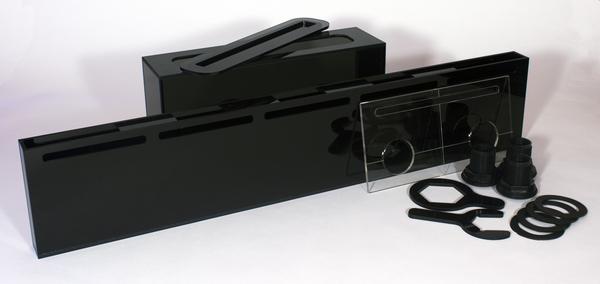I'll be ordering a custom made tank in a few weeks and want to drill the holes for the overflow myself. Since this tank isn't extremely wide and internal overflow chambers are just an eyesore, I'd love to make an external overflow. It'll also give me the space to use a herbie style drain without having this enormous internal chamber.
I think it'll be pretty straight forward: drill a few holes in the back where you want the waterline to be, put together a nice chamber and silicone it to the outside of the tank, stick a bulkhead through with some type of guard on it so fish can't get through and done. Might not be the prettiest, but it'll do in my mind. Of course I need to drill the bottom of the external chamber as well, that I understand
Is this correct? Am I overlooking something here?
One of those premade ghost overflows is out of my budget, so that's not an option.
I think it'll be pretty straight forward: drill a few holes in the back where you want the waterline to be, put together a nice chamber and silicone it to the outside of the tank, stick a bulkhead through with some type of guard on it so fish can't get through and done. Might not be the prettiest, but it'll do in my mind. Of course I need to drill the bottom of the external chamber as well, that I understand
Is this correct? Am I overlooking something here?
One of those premade ghost overflows is out of my budget, so that's not an option.



















